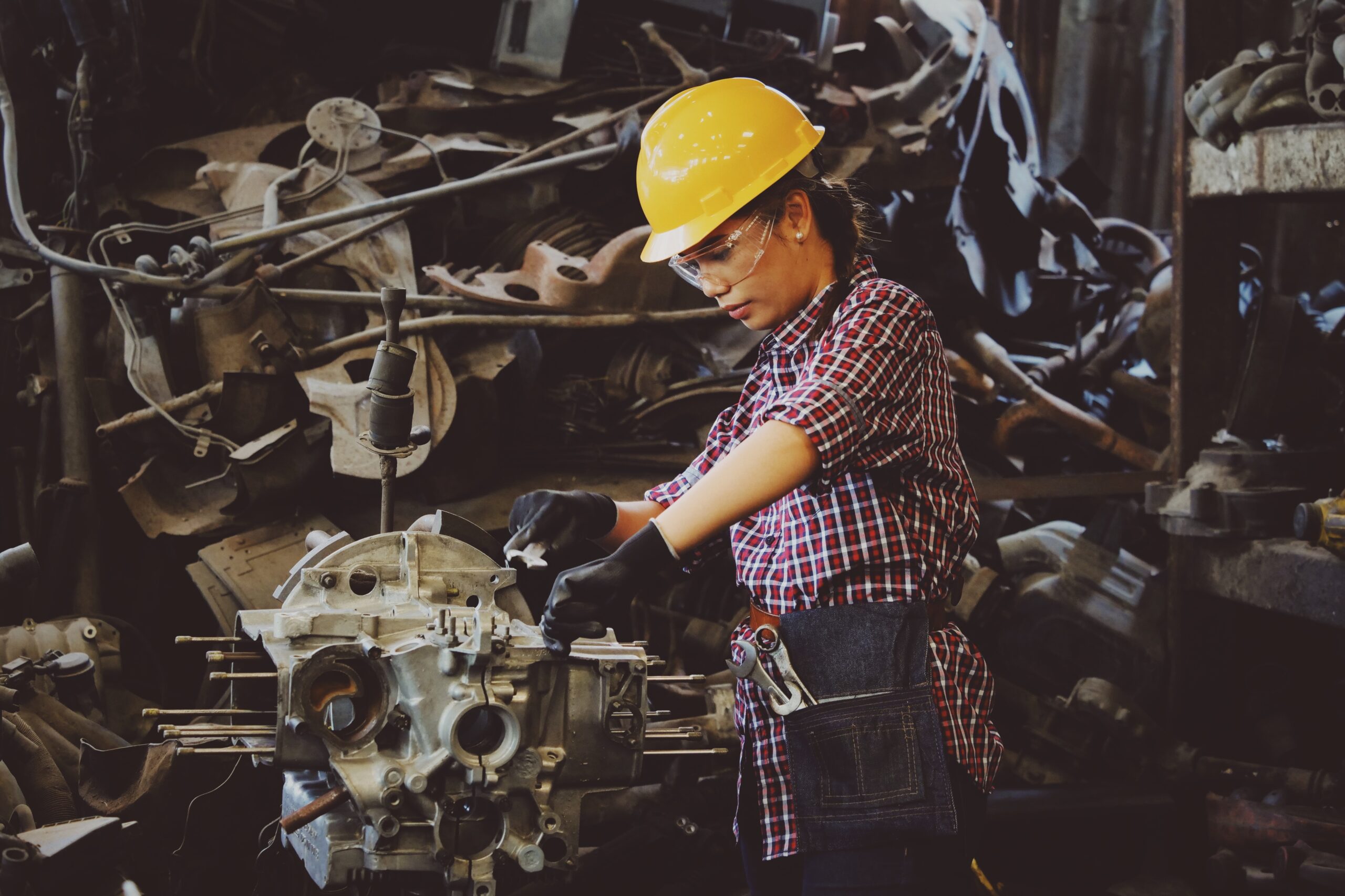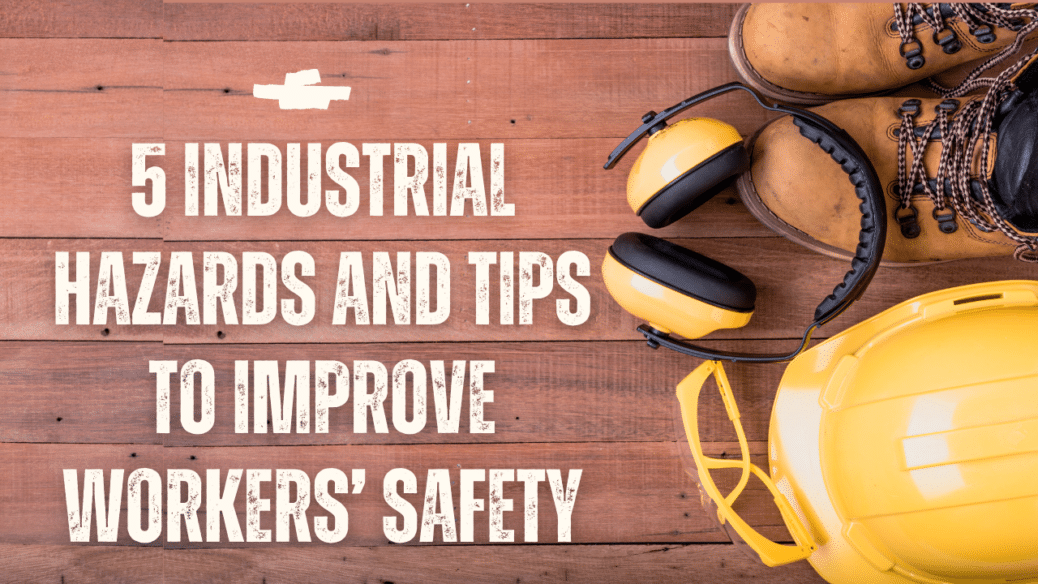5 Industrial Hazards And Tips To Improve Workers’ Safety
According to Zippia experts, there are about 2.6 million nonfatal workplace accidents in the US annually. In 2020, sprains, strains, and superficial wounds were the most common workplace injuries, with more than 266,000 cases. This is because industries can be a dangerous place to work. Far too many machines, tools, and chemicals can injure workers and, in extreme cases, land them in the hospital. As an industrialist, you must look after your workers better, ensure that the site is safe, and try to prevent them from getting into accidents. So how can you maximize worker safety? Here’s what you need to know:
Table of Contents

5 Industrial Hazards And Tips To Improve Workers’ Safety
Get The Area Examined
Before you can send workers to do their job at an industrial site, you need to get the area examined. A dangerous work environment can stress your employees. When there are too many machines and tools in a closed space, it can weigh down on your workers. Constant exposure to loud noises and vibrations can make your workers partially deaf, give them carpal tunnel syndrome, and even injure their limbs. If your employees work with chemicals, toxic fumes can irritate their lungs and hinder breathing, which can endanger their life. That’s why you need to get the area examined to deduce whether or not it is safe for your workers.
While you can hire outside expertise, getting an online post-grad degree and learning the strategies a technician uses to determine if a site is safe can help you ensure employee safety. Learning about what an industrial hygienist technician does, alongside acquiring professional services, can help you know what to look for and what is considered dangerous so that you can look after your workers better. You can also contain the situation in a much more informed manner by swapping old equipment for new tools, ensuring not too many workers are crowding one space, and revisiting training sessions which helps your workers remember basic safety guidelines.
Encourage Your Workers to Wear Protective Equipment (PPE)
Your workers need to wear protective gear while they do their tasks. You may need to educate them better on how to put them on and how to ensure they’re wearing the right-sized PPE. Ensure that when working with high-voltage electricity, they have enough insulation and grounding in their clothing not to get electrocuted. While dealing with construction equipment, make sure they wear helmets and goggles when exposed to dust and falling debris. When they work with chemicals, keep the space ventilated and don’t let them work without the right gear.
These can save them from numerous injuries and getting severely hurt. Some PPE is heavy; ensure your workers practice with the weight, so they can get comfortable moving around in this gear. It would help if you order PPE in bulk, don’t ask your workers to make do with older equipment or makeshift PPEs, such as using trash bags to cover their bodies to do their job. If there is a shortage of gear, you should ask your workers to stop work and arrange for safety equipment first.
Guide Them On Storing Equipment
If tools and equipment are lying around needlessly, they can cause a worker to trip and get injured. Likewise, if a tool is incorrectly stored, it can slip from its place and fall on a worker. These translate into more injuries for your workers, who may need immediate medical attention to get their wounds treated. Therefore, take the time to educate workers on equipment storage. It would help if you showed them how to switch a machine off, lock it into place, and put it away for the day. Help your workers identify when a tool needs maintenance and is far too rusted to use. This can further save them from injuries. Sometimes while using a tool, there’s a chance your worker may lose control over the device. In such cases, teach them to hit the emergency button and remove them from harm’s way before they get heavily injured.
Arrange For Clean Water
Workers need space to clean themselves up after they are done for the day. Being around chemicals can cause the residue to linger on their clothes which they can inhale accidentally. Fumes and dust are lethal for your workers’ health. They can accumulate in their lungs and enter their bloodstream, making them sick. Likewise, if they touch chemicals, they need space to wash up so they don’t accidentally ingest these toxins. Certain metals can sneak under the nail bed, so if your workers wipe their hands with a rag towel, it may not be enough to remove the leftover metals.
This, once again, can get ingested by them and enter their bloodstream. However, by providing them with clean water and antibacterial products, you can help your workers wash away the grime on their bodies. Ensure sufficient drainage since stagnant water can encourage pathogens to grow. Your workers should have enough space to take a shower and change into clean clothes, which can prevent them from taking dirty clothes home and making their families ill.
Arrange For Clean Up
Encourage your workers to clean up after they use the space. This means mopping the floor, draining chemicals, and wiping surfaces. Don’t let chemicals linger in one spot for long. It can tarnish the workspace and contaminate the environment. You should also encourage your workers to double-check if everything is in its place, all the switches are off, and no stray tool is lying about. During clean-up, ask your workers to evaluate if the industrial site has sufficient lighting, if there are any moving railings on the staircase, and if the flooring has sufficient friction to prevent your workers from slipping. A collaborative effort can save your workers from numerous injuries and save you from losing a valuable employee tragically.
Final Thoughts
Workers need guidance and protection as they do their job. This is because areas like factories and industries are full of health hazards. The chemicals, equipment, and machines lying around can injure your workers and fatally wound them. So as a manager, do your part and save your employees from getting hurt. Ensure safety measures are implemented, and minimize the damage by instructing your workers on how to look after themselves better through regular workshops and demonstrations. Your workers are your assets, and their safety is your responsibility.
Hello, I’m Cansu, a professional dedicated to creating Excel tutorials, specifically catering to the needs of B2B professionals. With a passion for data analysis and a deep understanding of Microsoft Excel, I have built a reputation for providing comprehensive and user-friendly tutorials that empower businesses to harness the full potential of this powerful software.
I have always been fascinated by the intricate world of numbers and the ability of Excel to transform raw data into meaningful insights. Throughout my career, I have honed my data manipulation, visualization, and automation skills, enabling me to streamline complex processes and drive efficiency in various industries.
As a B2B specialist, I recognize the unique challenges that professionals face when managing and analyzing large volumes of data. With this understanding, I create tutorials tailored to businesses’ specific needs, offering practical solutions to enhance productivity, improve decision-making, and optimize workflows.
My tutorials cover various topics, including advanced formulas and functions, data modeling, pivot tables, macros, and data visualization techniques. I strive to explain complex concepts in a clear and accessible manner, ensuring that even those with limited Excel experience can grasp the concepts and apply them effectively in their work.
In addition to my tutorial work, I actively engage with the Excel community through workshops, webinars, and online forums. I believe in the power of knowledge sharing and collaborative learning, and I am committed to helping professionals unlock their full potential by mastering Excel.
With a strong track record of success and a growing community of satisfied learners, I continue to expand my repertoire of Excel tutorials, keeping up with the latest advancements and features in the software. I aim to empower businesses with the skills and tools they need to thrive in today’s data-driven world.
Suppose you are a B2B professional looking to enhance your Excel skills or a business seeking to improve data management practices. In that case, I invite you to join me on this journey of exploration and mastery. Let’s unlock the true potential of Excel together!
https://www.linkedin.com/in/cansuaydinim/










